Modified Fixed Wall Oedometer When Considering Stress Dependence of Elastic Wave Velocities
Abstract
:1. Introduction
2. Material and Methods
2.1. Test Materials
2.2. Zero-Lateral Strain Cell
2.3. Experimental Procedure
3. Experimental Results and Discussions
3.1. Volume Change
3.2. Elastic Wave Velocity
4. Conclusions
Author Contributions
Funding
Conflicts of Interest
References
- Holtz, R.D.; Kovacs, W.D.; Sheahan, T.C. An Introduction to Geotechnical Engineering, 2nd ed.; Pearson: London, UK, 2010. [Google Scholar]
- Barnekow, U.; Paul, M. Use of special oedometer tests for the remediation of large uranium mill tailings impoundments at Wismut, Germany. Uranium Prod. Cycle Environ. 2000, 2, 386. [Google Scholar]
- Chenari, R.J.; Fard, M.K.; Maghfarati, S.P.; Pishgar, F.; Machado, S.L. An investigation on the geotechnical properties of sand–EPS mixture using large oedometer apparatus. Constr. Build. Mater. 2016, 113, 773–782l. [Google Scholar] [CrossRef]
- Karimpour-Fard, M.; Zarbakhash, S.; Soufi, G.R.; Ahadi, A.; Naveen, B.P. Design, fabrication and calibration of a tall pneumatic oedometer apparatus. Measurement 2020, 163, 107985. [Google Scholar] [CrossRef]
- Mokhtari, M.; Shariatmadari, N.; Salehzadeh, H. Design and fabrication of a large-scale oedometer. J. Cent. South Univ. 2015, 22, 931–936. [Google Scholar] [CrossRef]
- Ng, A.M.; Yeung, A.T.; Lee, P.K.; Tham, L. Design, fabrication, and assembly of a large oedometer. Geotech. Test. J. 2006, 29, 298–305. [Google Scholar]
- O’Kelly, B.C. Development of a large consolidometer apparatus for testing peat and other highly organic soils. Suoseura 2009, 60, 23–36. [Google Scholar]
- Oldecop, L.A.; Alonso, E.E. Measurement of lateral stress and friction in rockfill oedometer tests enabling the analysis of the experimental results in the p′-q space. Geotech. Test. J. 2017, 40, 822–832. [Google Scholar] [CrossRef]
- Ayala, J.L.; Villalobos, F.A.; Alvarado, G. Study of the elastic shear modulus of Bio Bio sand using bender elements in an oedometer. Geotech. Test. J. 2017, 40, 673–682. [Google Scholar] [CrossRef] [Green Version]
- Chamorro-Zurita, C.; Ovando-Shelley, E. Anisotropy of lacustrine soils in a large oedometer equipped with bender elements. Soils Found. 2020, 60, 372–383. [Google Scholar] [CrossRef]
- Dyvik, R.; Madshus, C. Lab Measurements of G max Using Bender Elements. In Advances in the Art Testing Soils Under Cyclic Conditions, Proceeding of the ASCE Convention, Detroit, MI, USA, 24 October 1985; American Society of Civil Engineers: New York, NY, USA, 1985; pp. 186–196. [Google Scholar]
- Lee, C.; Lee, J.S.; Lee, W.; Cho, T.H. Experiment setup for shear wave and electrical resistance measurements in an oedometer. Geotech. Test. J. 2008, 31, 149–156. [Google Scholar] [CrossRef]
- Zeng, X.; Ni, B. Application of bender elements in measuring G max of sand under K0 condition. Geotech. Test. J. 1998, 21, 251–263. [Google Scholar]
- Lee, J.-S.; Santamarina, J.C. Bender elements: Performance and signal interpretation. J. Geotech. Geoenviron. Eng. 2005, 131, 1063–1070. [Google Scholar] [CrossRef] [Green Version]
- ASTM-D854. Standard Test Methods for Specific Gravity of Soils by Water Pycnometer; Annual Book of ASTM Standards; ASTM: West Conshohocken, PA, USA, 2014. [Google Scholar]
- ASTM-D4253. Standard Test Methods for Maximum Index Density and Unit Weight of Soils Using a Vibratory Table; Annual Book of ASTM Standards; ASTM: West Conshohocken, PA, USA, 2006. [Google Scholar]
- ASTM-D4254. Standard Test Methods for Minimum Index Density and Unit Weight of Soils and Calculation of Relative Density; Annual Book of ASTM Standards; ASTM: West Conshohocken, PA, USA, 2006. [Google Scholar]
- ASTM-D421. Standard Practice for Dry Preparation of Soil Samples for Particle-Size Analysis and Determination of Soil Constant; Annual Book of ASTM Standards; ASTM: West Conshohocken, PA, USA, 2007. [Google Scholar]
- Lodahl, M.R.; Mortensen, N.; TrankjÊr, H. Oedometer tests with measurement of internal friction between oedometer ring and clay specimen. In Proceedings of the 17th Nordic Geotechnical Meeting, Reykjavik, Iceland, 25–28 May 2016; pp. 289–298. [Google Scholar]
- Monden, H. Characteristics of side friction in the one-dimensional consolidation test. Soils Found. 1969, 9, 11–41. [Google Scholar] [CrossRef] [Green Version]
- Biot, M.A. Theory of propagation of elastic waves in a fluid-saturated porous solid. I. Low-frequency range. J. Acoust. Soc. Am. 1956, 28, 168–178. [Google Scholar] [CrossRef]
- Yang, J. Liquefaction resistance of sand in relation to P-wave velocity. Geotechnique 2002, 52, 295–298. [Google Scholar] [CrossRef]
- Yang, J.; Sato, T. Interpretation of seismic vertical amplification observed at an array site. Bull. Seism. Soc. Am. 2000, 90, 275–285. [Google Scholar] [CrossRef]
- Bardet, J.; Sayed, H. Velocity and attenuation of compressional waves in nearly saturated soils. Soil Dyn. Earthq. Eng. 1993, 12, 391–401. [Google Scholar] [CrossRef]
- Nur, A.; Simmons, G. The effect of saturation on velocity in low porosity rocks. Earth Planet. Sci. Lett. 1969, 7, 183–193. [Google Scholar] [CrossRef]
- Emerson, M.; Foray, P. Laboratory P-wave measurements in dry and saturated sand. Acta Geotech. 2006, 1, 167–177. [Google Scholar] [CrossRef]
- Hardin, B.; Richart, J.F. Elastic wave velocities in granular soils. J. Soil Mech. Found. Div. 1963, 89, 3407. [Google Scholar]
- Roesler, S.K. Anisotropic shear modulus due to stress anisotropy. J. Geotech. Eng. Div. 1979, 105, 871–880. [Google Scholar]
- Santamarina, J.C.; Klein, A.; Fam, M.A. Soils and waves: Particulate materials behavior, characterization and process monitoring. J. Soils Sediments 2001, 1, 130. [Google Scholar] [CrossRef]
- Cha, M.; Santamarina, J.C.; Kim, H.-S.; Cho, G.-C. Small-strain stiffness, shear-wave velocity, and soil compressibility. J. Geotech. Geoenviron. Eng. 2014, 140, 06014011. [Google Scholar] [CrossRef] [Green Version]
- Kang, X.; Kang, G.-C.; Bate, B. Measurement of stiffness anisotropy in kaolinite using bender element tests in a floating wall consolidometer. Geotech. Test. J. 2014, 37, 869–883. [Google Scholar] [CrossRef]
- Sivrikaya, O.; Togrol, E. Measurement of side friction between specimen and consolidation ring with newly designed oedometer cell. Geotech. Test. J. 2006, 29, 87–94. [Google Scholar]
- Lovisa, J.; Sivakugan, N. Tall oedometer testing: Method to account for wall friction. Int. J. Geomech. 2015, 15, 04014045. [Google Scholar] [CrossRef]
- Jaky, J. The coefficient of earth pressure at rest. J. Soc. Hung. Archit. Eng. 1944, 78, 355–358. [Google Scholar]

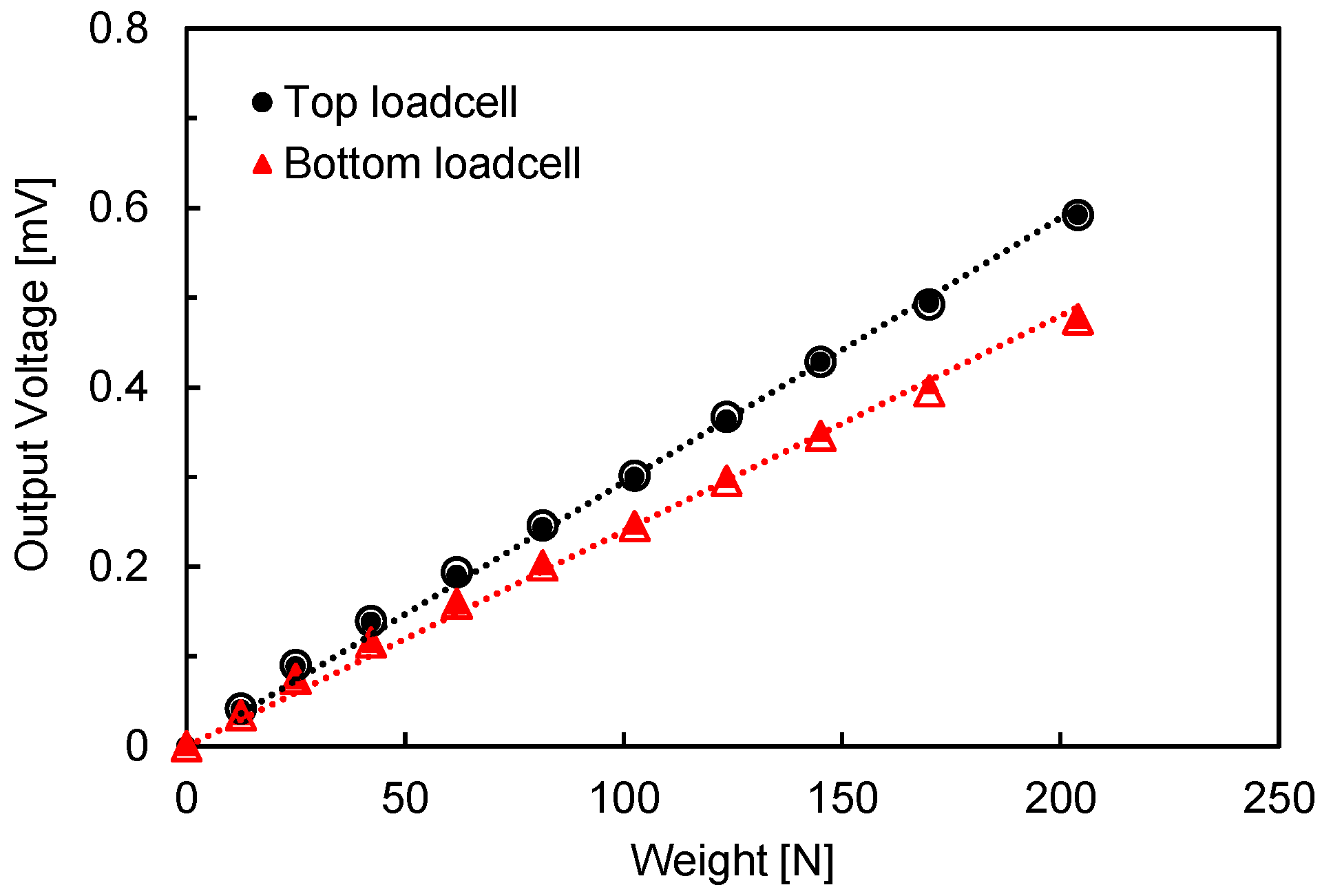
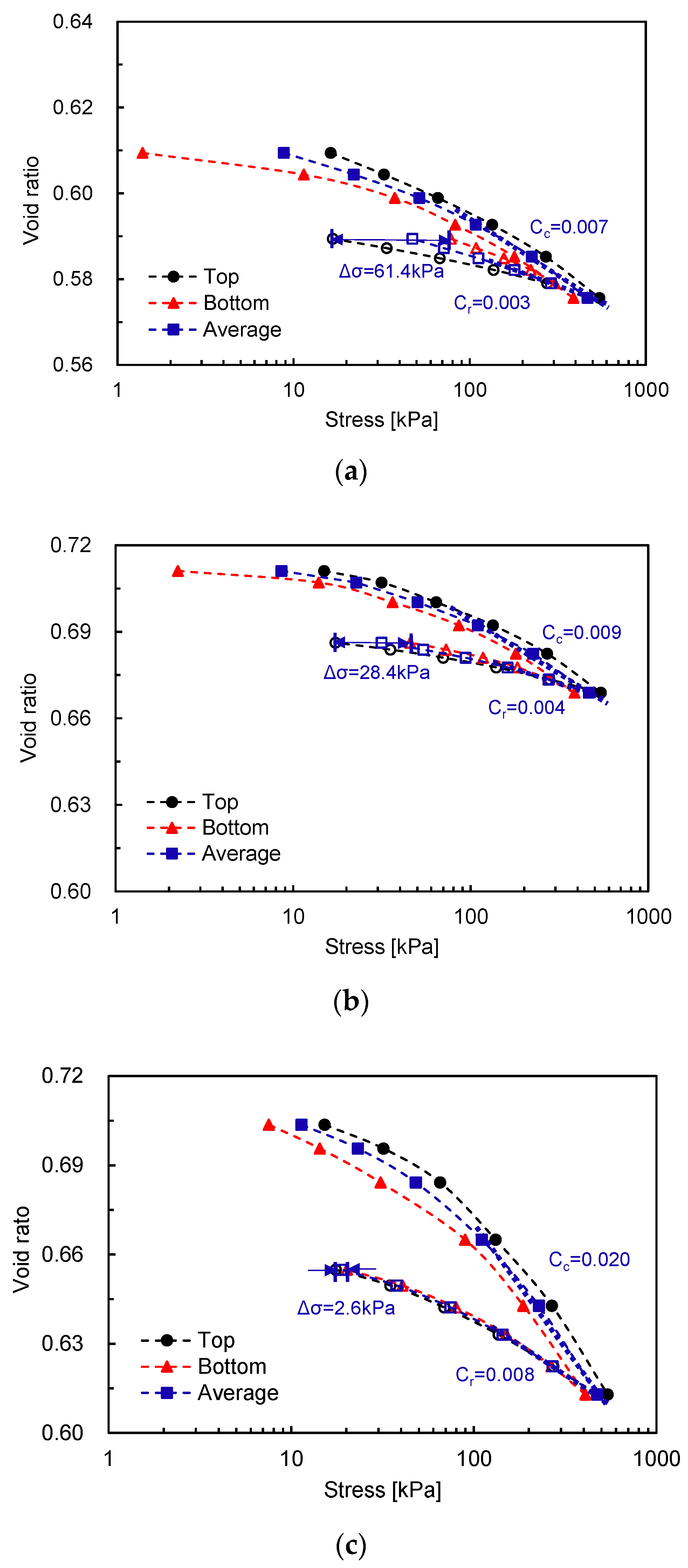
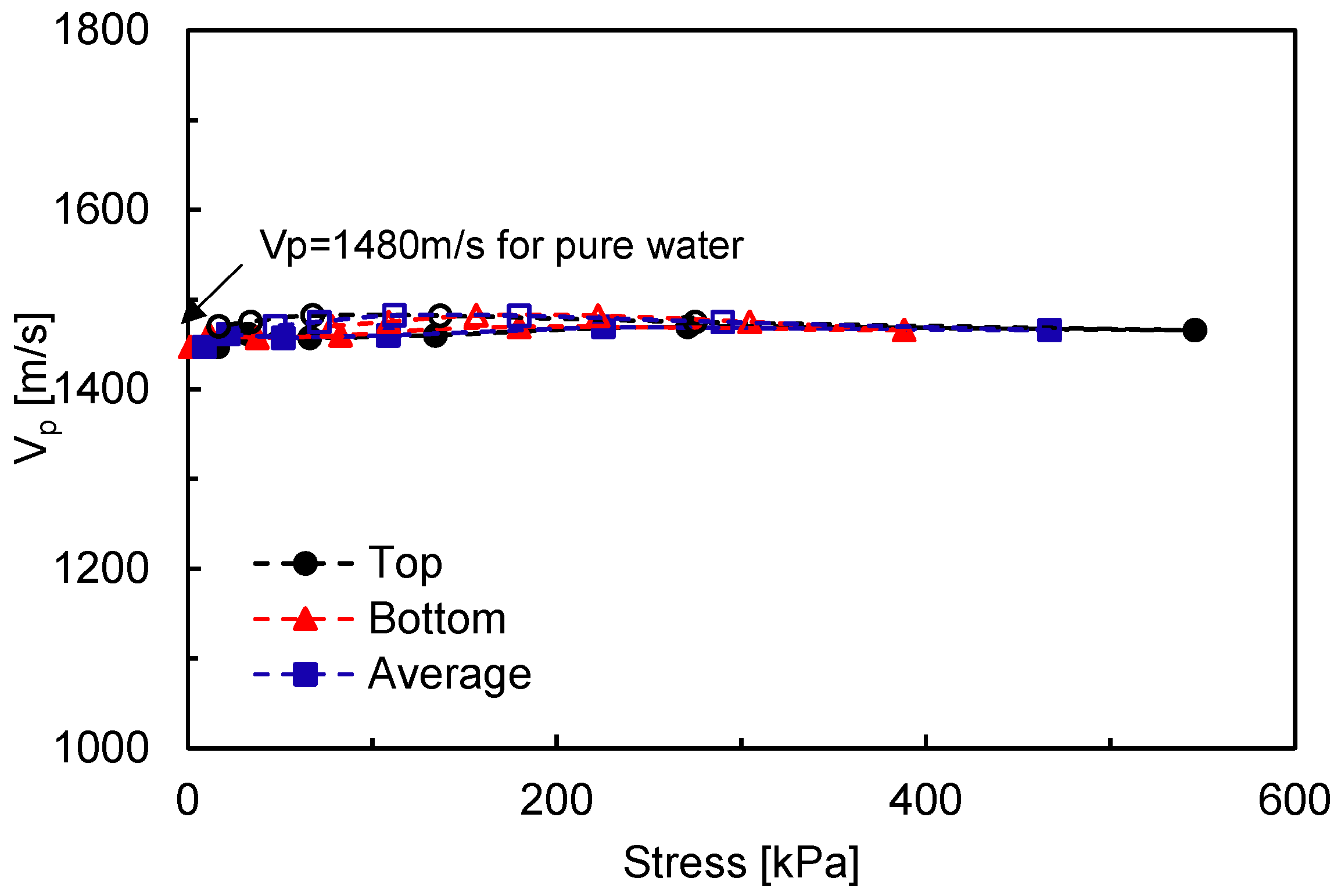
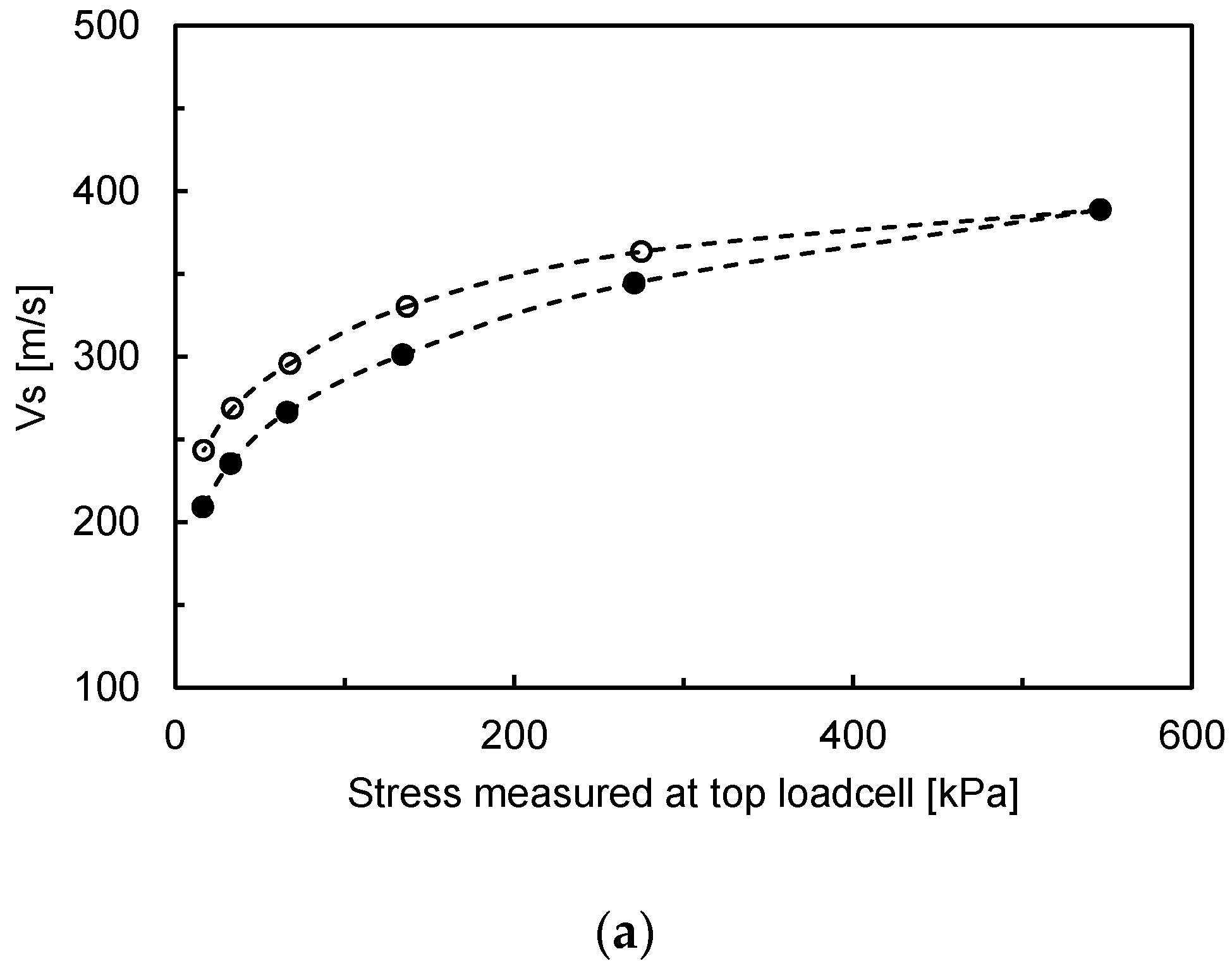
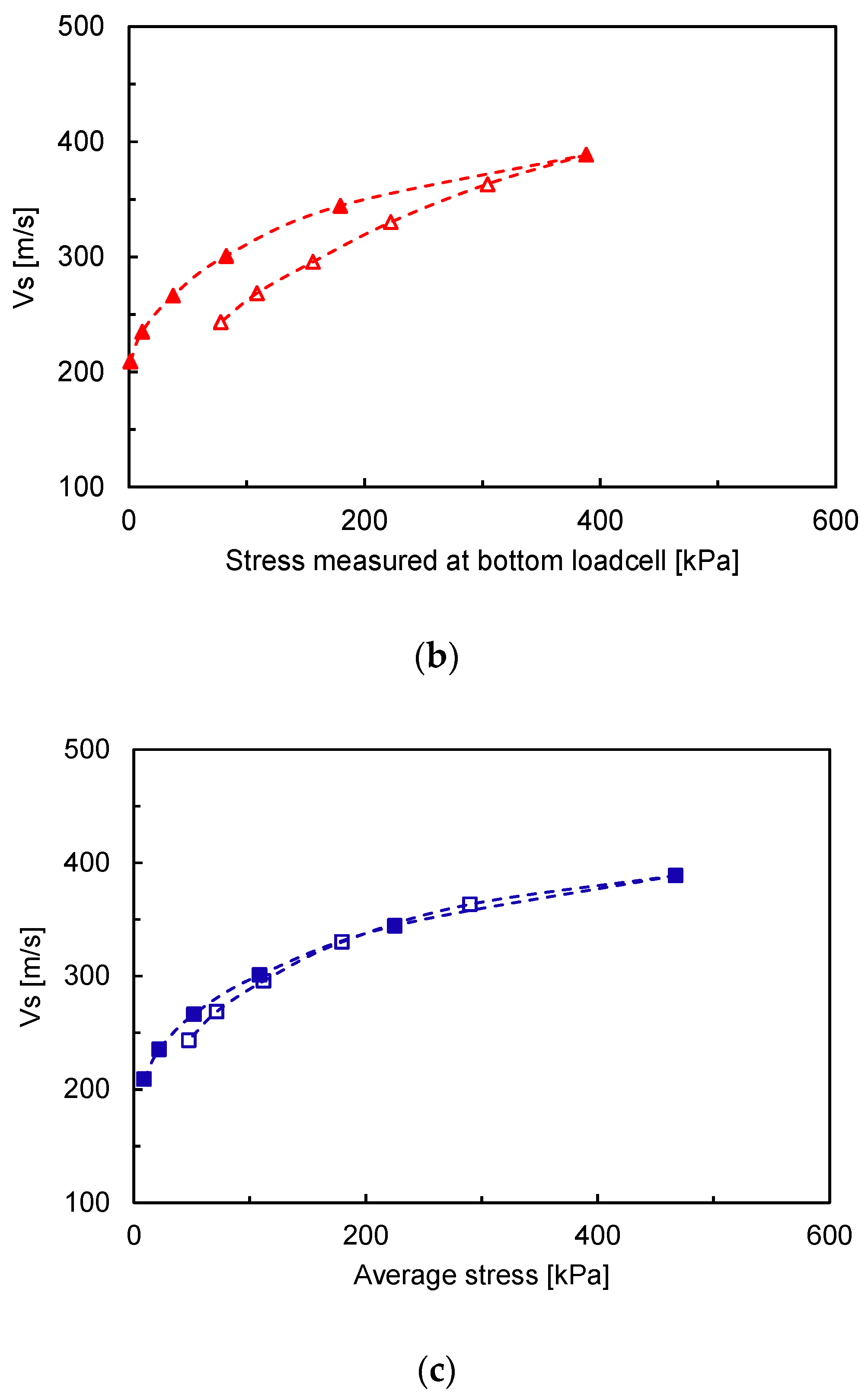
| No. | Relative Density (%) | Diameter-to-Height Ratio |
|---|---|---|
| 1 | 80 | 1 |
| 2 | 40 | 1 |
| 3 | 40 | 2 |
Publisher’s Note: MDPI stays neutral with regard to jurisdictional claims in published maps and institutional affiliations. |
© 2020 by the authors. Licensee MDPI, Basel, Switzerland. This article is an open access article distributed under the terms and conditions of the Creative Commons Attribution (CC BY) license (http://creativecommons.org/licenses/by/4.0/).
Share and Cite
Lee, J.-S.; Park, G.; Byun, Y.-H.; Lee, C. Modified Fixed Wall Oedometer When Considering Stress Dependence of Elastic Wave Velocities. Sensors 2020, 20, 6291. https://doi.org/10.3390/s20216291
Lee J-S, Park G, Byun Y-H, Lee C. Modified Fixed Wall Oedometer When Considering Stress Dependence of Elastic Wave Velocities. Sensors. 2020; 20(21):6291. https://doi.org/10.3390/s20216291
Chicago/Turabian StyleLee, Jong-Sub, Geunwoo Park, Yong-Hoon Byun, and Changho Lee. 2020. "Modified Fixed Wall Oedometer When Considering Stress Dependence of Elastic Wave Velocities" Sensors 20, no. 21: 6291. https://doi.org/10.3390/s20216291






